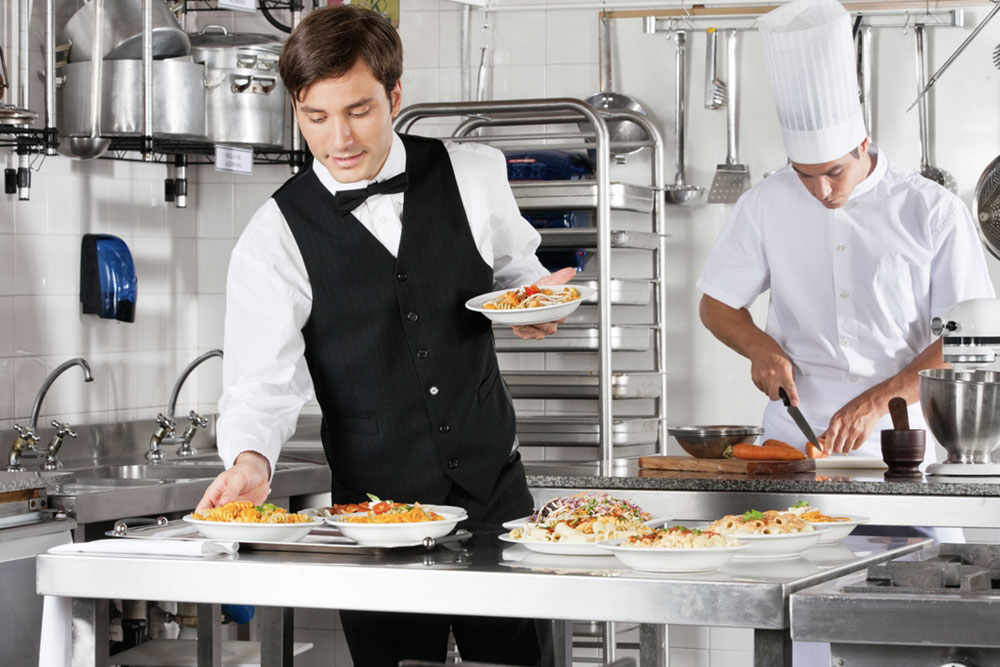
Food service industry – Types, skills, equipment, and more
The food service industry is one of the largest employers in the country. It encompasses all food businesses, including full-service restaurants, quick-service restaurants, catering companies, coffee shops, private chefs, and more. It also includes food distributor services, that is, companies that deliver food products to restaurants and grocers, and food service apps that have made it possible for consumers to have fresh food and groceries delivered right to their doorstep.
Types of food service
Each restaurant or banquet has a unique style of food service. Some of the most popular types that one can find are:
Silver service
Also known as the English service, this style is a formal serving method, where food is served to a plate from the left side of the guest and drinks from their right.
Plated service
The plated service style is also known as the American service, where the food is neatly plated in the kitchen and placed on the guest’s cover.
Buffet service
In a buffet service, the food is displayed on various tables. For example, guests can serve themselves on the stacked plates or flag a server’s attention for help.
French service
This style of service is also known as family-style service, where the server places the dishes on the table with service implements so that the guests can serve themselves.
Tray service
Generally used in fast-food service restaurants, the food is neatly arranged on trays and the necessary utensils. The servers take the food to the rooms, beds, or seats.
Self-service
This is the simplest service method, as the customers help themselves with the dishes they want to eat, and it is commonly followed in cafeterias and vending services.
Depending on the type of food offered, each business requires different types of equipment. However, common food service equipment in most businesses includes trolleys, weighing scales, refrigerators, freezer racks, mixer grinders, cooking ranges, steamers, boilers, hot cases, sinks, cutlery, serving platters or trays, ice-box, garbage bins, etc.
Skills required in the food service industry
There are various skills to master when it comes to food service. Key industry skills include customer service, food preparation, waiting tables, operating the reservation and point of sales system, operating kitchen equipment, following the sanitizing procedures, bartending, and menu preparation. The job also requires soft skills such as attention to detail, organization, adaptability, hospitality, and teamwork, as this helps candidates thrive in this field.
These skills can open the doors to job opportunities such as a host/hostess, server, chef, food service manager, restaurant manager, food safety specialist, prep cook, butcher, pastry cook, line cook, baker, sous chef, etc.
Besides regular university-level hospitality training courses, candidates in this field can earn extra certifications to enhance their chances of securing a better position. Gaining national accreditations such as a ServSafe Food Handler certification enhances your knowledge of foodborne illness and contamination, food preparation and storage, safe kitchen cleaning, and managing food allergies. This certification must be renewed every five years to stay updated with the current regulations.
Food packaging services
Once prepared, food is either served immediately or packed and delivered to other locations. Packaging may require unique materials such as food-safe containers, insulated boxes, dinnerware, and carry bags. In addition, various critically-acclaimed companies are providing food packaging solutions nationwide. FDA guidelines govern them to help protect consumers against potentially harmful chemicals or ingredients, maintain uniformity, and protect the environment.
Conclusion
With more people opting for deliveries now than ever, the food industry has had to reimagine its market and quickly adapt to these changes. Although many restaurants delivered food earlier, third-party apps have completely transformed the space. This has led to the development of ghost or cloud kitchen services, employing more people with food service jobs. These commercial kitchens are not attached to restaurants, have no on-site eating space, and are only designed for takeout and delivery services. This fast-growing business model has witnessed widespread acceptance worldwide and is expected to attain a global revenue of $373 billion by 2030.




